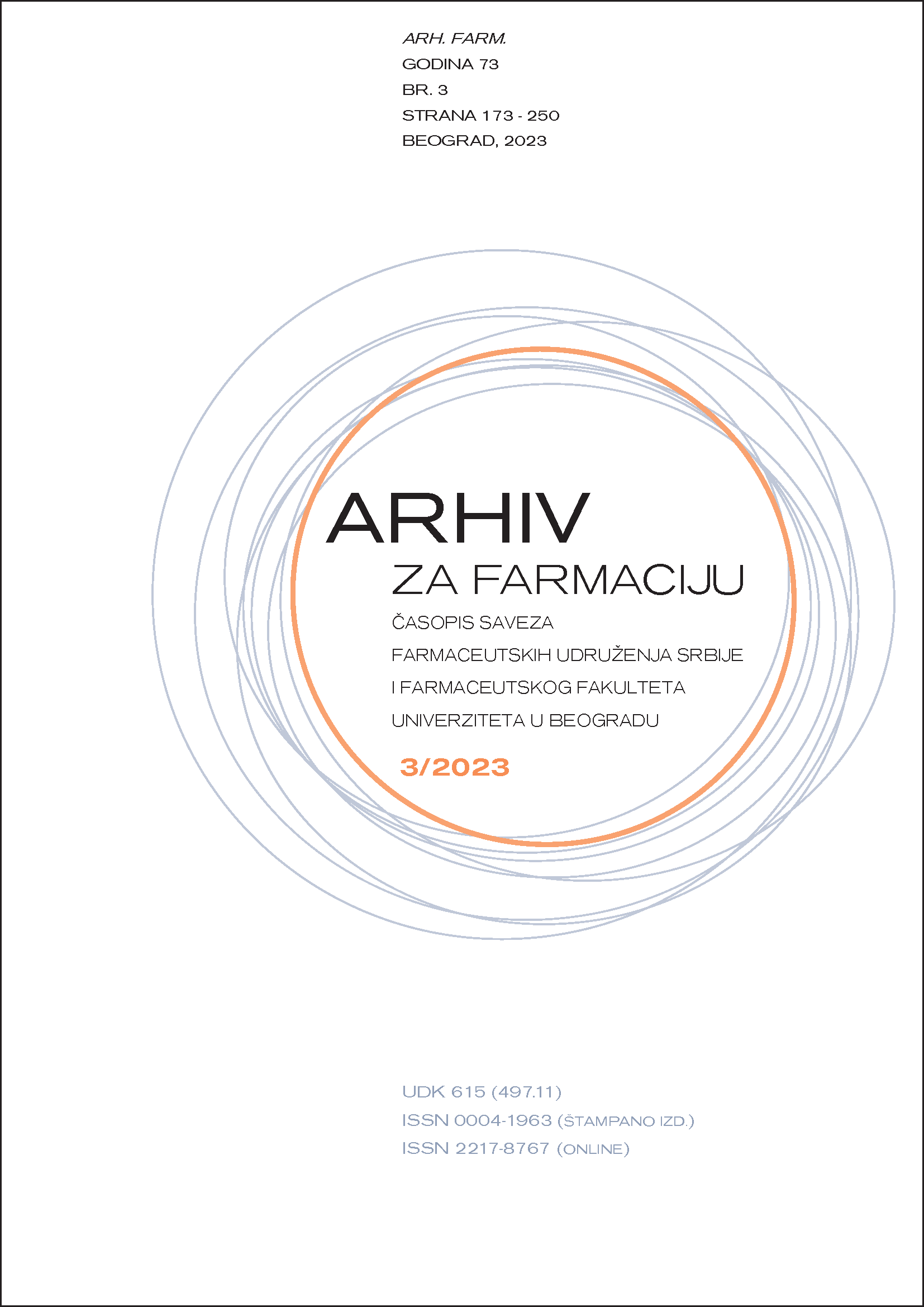Development and validation of a stability-indicating RP-HPLC method for determination of aripiprazole and its degradation products
Abstract
The aim of this study was to develop a stability-indicating RP-HPLC method for the analysis of aripriprazole and its degradation products in tablets. In addition, robustness was tested by applying the methodology of experimental design. The forced degradation study of aripiprazole was conducted in accordance with the ICH guidelines. The stability of the active pharmaceutical substance was tested under the conditions of hydrolysis in acidic, neutral and basic environments, thermal degradation, oxidation and photolysis. The active pharmaceutical ingredient was degraded under oxidation conditions, and the identity of the resulting degradation product, N-oxide, was confirmed by comparing the retention time and UV spectrum with the reference standard substance. Under the other conditions tested, the active pharmaceutical substance was found to be stable. The developed method RP-HPLC allowed the separation of degradation products and aripiprazole and was defined as a stability-indicating method. The stability indicating RP-HPLC method was validated for simultaneous qualitative and quantitative analysis of aripiprazole and its impurities. Accordingly, selectivity, linearity, precision, accuracy, limit of detection, limit of quantification, and robustness of the method were tested. The Box-Behnken experimental design was used in robustness testing.
References
1. Lemke TL, Williams DA, Roche VF, Zito SW. Foye’s Principles of Medicinal Chemistry. 7th ed. Baltimore: Lippincot; 2013.
2. European Medicines Agency PubChem [Internet]. Evaluation of Medicines for Human Use; Assessment report [cited 2023 June 18]. Available from: httpshttp://www.ema.europa.eu
/>/docs/en_GB/document_library/EPAR_Public_assessment_report/human/002755/WC500156105.pdf.
3. PubChem [Internet]. Bethesda (MD): National Library of Medicine (US), National Center for Biotechnology Information; 2004-. PubChem Compound Summary for CID 60795, Aripiprazole [cited 2023 June 18]. Available from: https://pubchem.ncbi.nlm.nih.gov/compound/Aripiprazole.
4. Thakkar RS, Saravaia HT, Ambasana MA, Kaila OH, Shah AKA. Chomatographic Determination of Aripiprazole using HPLC and UPLC A comparative validation study. Indian J Pharm Sci. 2011;73(4):439-443.
5. Kalaichelvi R, Thangabalan B, Srinivasa RD. Validated RP-HPLC Method for Analysis of Aripiprazole in a Formulation. J Chem. 2010;7(3):827-832.
6. Srinivasa N, Srinivas P, Venkataramana A, Venkateswara P. Analytical Method Development Report for Aripiprazole Tablets 2mg, 5mg, 10mg, 15mg, 20mg and 30mg. Int J Adv Pharm Biol Chem. 2012;1(3):377-380.
7. Bhanotu B, Srinath P, Kedarnath J. Development, Estimation and Validation of Aripiprazole in Bulk and Its Pharmaceutical Formulation by HPLC Method. Int J Chemtech Res. 2012;4(1), 124-128.
8. Sastry BS, Gananadhamu S, Devala G. RP-HPLC Determination of Aripiprazole in Pharmaceutical Formulations. Asian J Chem. 2009;21(9):6643-6646.
9. Brittain HG. Profiles of Drug Substances, Excipients and Related Methodology. Elsevier Inc. 2013; 38:52-56.
10. Pai NR, Dubhashi DS. Development and validation of liquid chromatographic method for aripiperazole. Der Pharm Sin. 2012;3(5):526-535.
11. Pai NR, Dubhashi DS. Development of stability indicating, validated HPLC method for quantitative determination of Aripiprazole and its impurities. Der Pharm Lett. 2010;2(4):1-10.
12. Nikolić K, Djordjević Filijović N, Maričić B, Agbaba D. Development of a novel RP-HPLC method for the efficient separation of aripiprazole and its nine impurities. J Sep Sci. 2013; 36:3165–3175.
13. Soponar F, Sandru M, David V. Quantitative evaluation of aripiprazole and its five related chemical impurities from pharmaceuticals using a HPLC-DAD method. Rev Roum Chim. 2014;59(11-12):1037-1046.
14. Murali Krishna, MVVN. Identification of degradation impurities in aripiprazole oral solution using LC–MS and development of validated stability indicating method for assay and content of two preservatives by RP-HPLC. J Liq Chromatogr Relat Technol. 2017;40(14):741-750.
15. Svrkota B, Krmar J, Protić A, Zečević M, Otašević B. Optimization of chromatographic separation of aripiprazole and impurities: Quantitative structure retention relationship approach. J Serb Chem Soc. 2022;87(5):615–628.
16. European Pharmacopoeia. 11th Ed, Strasbourg: Council of Europe, 2023.
17. Britain Pharmacopoeia. London: The Pharmaceutical Press, 2023.
18. The United States Pharmacopoeia 45 / National Formulary 40, United States Pharmacopoeial Convention, Rockville: Md. USA, 2023.
19. ICH Harmonised Tripartite Guideline. Good Manufacturing Practise Guide for Active Pharmaceutical Ingredients-Q7, Current Step 4 version, 10 November 2000
20. ICH Harmonised Tripartite Guideline. Validation of analytical procedures: Text and methodology-Q2 (R1), Current Step 4 version, November 2005.

